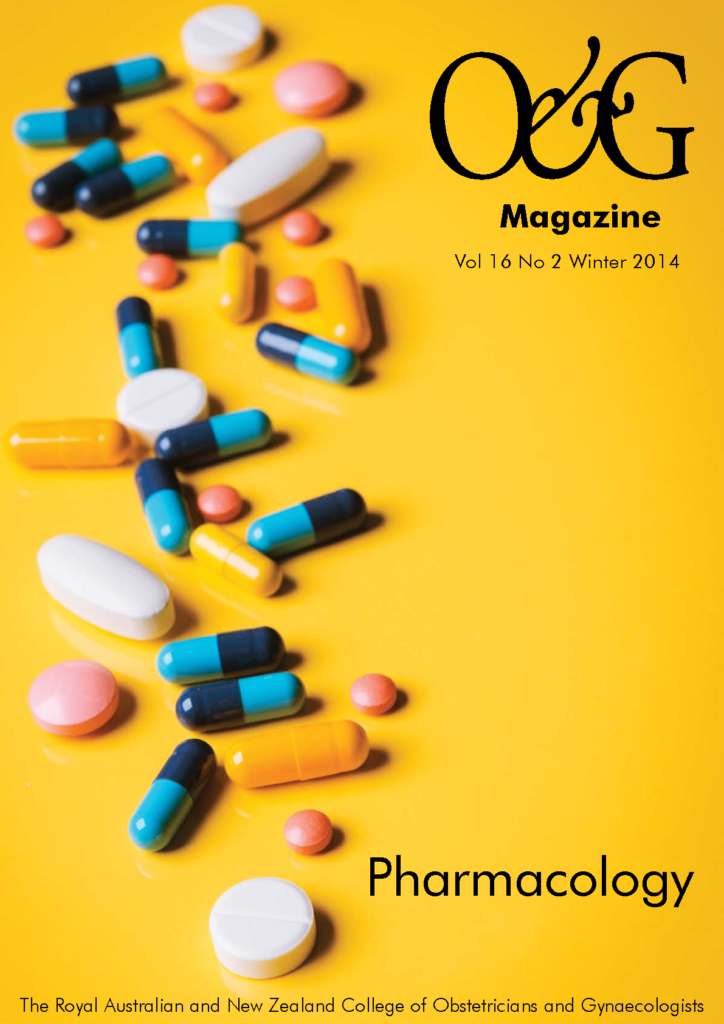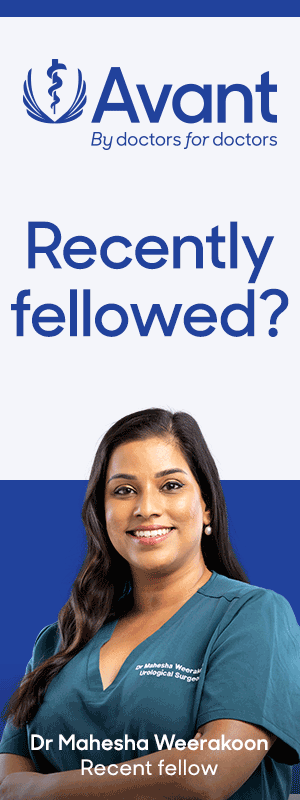The pharmaceutical landscape of assisted reproductive technologies is constantly evolving, led by the explosion in our understanding of human reproduction and the promise of lucrative returns in this growth industry.
One in six Australian and New Zealand couples seeks fertility treatment. Most will proceed to some form of assisted reproduction, ranging from the induction of ovulation to in vitro fertilisation (IVF). Assisted reproductive technology (ART) is the summative term applied to laboratory or clinical technology to gametes and/or embryos for the purposes of reproduction. These treatments typically involve the administration of pharmaceuticals to stimulate follicular development, prevent premature ovulation and trigger timely ovulation.
Ovulation induction
A number of preparations are used to induce ovulation, including selective oestrogen receptor modulators (SERMs), metformin, gonadotrophins, aromatase inhibitors and pulsatile gonadotrophin releasing hormone (GnRH). The latter are used uncommonly. Ovulation induction may be performed in conjunction with intrauterine insemination.
Clomiphene is widely used for ovulation induction and is the most commonly used selective SERM. Its primary action is to block oestrogen receptors in the hypothalamus. This causes a loss of negative feedback and an increase in pituitary secretion of follicle stimulating hormone (FSH) and luteinising hormone (LH).
Metformin is an oral biguanide that can be used for ovulation induction. Systematic meta-analyses of randomised trials have confirmed that in non-obese women with polycystic ovarian syndrome, metformin has similar pregnancy rates to clomiphene.1 Although the routine addition of metformin to clomiphene does not improve chances of conception, co-treatment is often used for women resistant to clomiphene alone.2
The principal gonadotrophin, FSH, is a glycoprotein that presently can only be administered by subcutaneous injection. FSH is administered daily and monitored by ultrasound and/or hormone levels. Dosing is determined by clinical parameters, such as age and ovarian reserve. FSH doses are much lower than used during IVF. The risk of multiple pregnancy is as high as 20 per cent. This may be decreased when sonographic monitoring is used in conjunction with a rigid cancellation policy.3 Ovulation may be triggered with human chorionic gonadotrophin (hCG), as an analogue to the natural surge in LH. hCG is a suitable trigger as biochemically it is very similar to LH. hCG, LH, FSH and TSH are glycoprotein heterodimers consisting of an alpha and a beta subunit. The α-subunits are identical, however, the β-subunits differ, giving these glycoproteins their individual characteristics. Insemination or intercourse is usually timed 24–48 hours from the trigger injection.
Aromatase inhibitors are currently not approved for ovulation induction in Australia or New Zealand. Aromatase inhibitors block ovarian oestrogen production. This causes a loss of oestrogen negative feedback and increase in gonadotrophin secretion. Aromatase inhibitors appear to have similar efficacy to clomiphene, but with a substantially reduced risk of multiple pregnancy because the normal feedback mechanisms remain functional.
The current evidence does not support the routine use of naltrexone, a central opioid receptor antagonist, or dopamine agonists, such as bromocriptine. Pulsatile GnRH is rarely used given its expense and difficultly of administration.
In vitro fertilisation
Controlled ovarian hyperstimulation
Women undergoing IVF treatment have an improved chance of conception through collection of multiple mature oocytes. This is achieved through controlled ovarian hyperstimulation. In Australia and New Zealand, controlled ovarian hyperstimulation is most commonly performed with recombinant FSH preparations. The two recombinant products on the market, follitropin-alpha (Gonal-F) and follitropin-beta (Puregon), are manufactured using a modified Chinese hamster cell line.
Corifollitropin alfa (Elonva) is a long-acting recombinant FSH that replaces seven days of rFSH injections. It is a hybrid of FSH and the β-carboxyl terminal of hCG, which increases its half-life by reducing its rate of metabolism. Patients require six fewer injections compared to standard FSH cycles. Elonva is not suitable for women at risk of excessive response: those with polycystic ovaries or previous hyperstimulation syndrome. Evidence has demonstrated non-inferiority of this product when compared with standard FSH protocols.
Older urinary FSH preparations, such as Pergonal, Humegon and Bravelle, are no longer available on the Australasian market. While inexpensive, there were concerns regarding purity, batch variability and supply reliability. Recently, urinary gonadotrophins have had a revival with Menopur, a human menopausal gonadotrophin. The manufacturer has overcome the challenges to present a highly purified preparation that contains FSH, LH and hCG. Currently, there is little evidence that the routine use of the combination of FSH and LH increases the chances of pregnancy over the use of FSH alone.4
Prevention of premature LH surge
Before the development of GnRH agonists, IVF clinicians were hampered by ovulation prior to egg retrieval. This occurred in up to 40 per cent of IVF cycles. GnRH agonists, initially developed to induce ovulation, revolutionised IVF by preventing this premature LH surge. Developers found, however, a few days after administration, the GnRH receptor was downregulated and ovulation suppressed. The mechanism of receptor downregulation is incompletely understood.
Alternatively, the premature LH surge may be prevented by GnRH antagonists, which competitively bind and block gonadotrophin receptors. Worldwide, GnRH agonists remain more widely used in IVF, despite GnRH antagonist cycles being more patient friendly. GnRH antagonist cycles are shorter and patients do not suffer oestrogen deprivation side effects. Furthermore, there is a more than 50 per cent reduction in the risk of ovarian hyperstimulation syndrome (OHSS).5
The utility of early GnRH antagonists was limited by histamine reactions. This is now an infrequent problem with the current third-generation GnRH antagonists Orgalutran and Cetrotide. There have been three Cochrane meta-analyses comparing agonist to antagonist cycles in IVF. The first, in 2001, demonstrated a significantly lower clinical pregnancy rate in GnRH antagonist protocols. The 2006 meta-analysis found no significant difference in clinical pregnancy rate and also no difference in live birth rate. The most recent Cochrane, in 2011, shows no difference in live birth rate, but a slightly reduced clinical pregnancy rate in antagonist cycles (OR 0.84, 0.75–0.94).5
It is likely that GnRH antagonists were initially more commonly used in poorer prognosis patients, such as those with previous poor response or suboptimal outcome. Further studies will likely further dilute the evidence favouring GnRH agonists.
Ovulation trigger
During an IVF cycle, oocyte maturation must be triggered to complete the final meiotic division. Transvaginal oocyte retrieval is performed 36–38 hours following the trigger injection, a few hours before expected ovulation with ensuant follicular rupture and extrusion of the mature oocyte into the peritoneal cavity.
Oocyte maturation is induced using 250–500µg of recombinant (Ovidrel) or 5000–10 000IU of urinary (Pregyl) hCG. Triggering ovulation with hCG is substantially cheaper than LH and is associated with higher implantation rates.6 To date, 5000 IU of urinary hCG appears to be as effective as 10 000 IU, but is associated with a lower rate of OHSS. Similarly, 5000IU uhCG is equally as effective as 250µg of recombinant hCG.7
In antagonist cycles, GnRH agonists can be used for ovulation triggering by inducing an endogenous LH surge. The major benefit of an agonist trigger is that OHSS is almost completely prevented. Unfortunately, clinical pregnancy and live birth rates are significantly reduced with agonist trigger.8 GnRH agonists cause an attenuated LH surge, sufficient for resumption of ovarian maturation, but insufficient for luteal support. If an agonist trigger is used, viable embryos are generally frozen and replaced later. An agonist trigger is commonly used in patients undergoing oocyte or embryo cryopreservation for fertility preservation, in oocyte donation or to avoid cycle cancellation in women with excessive ovarian response who may be at risk of ovarian hyperstimulation syndrome.
Luteal support
Abundant follicles created by hyperstimulation cause a marked increase in oestrogen production, leading to an advanced endometrium. This is followed by dysfunctional corpora lutea as a result of damage by the process of surgical oocyte retrieval. Thus pregnancy rates are higher if the luteal phase is supported by exogenous progesterone.
Exogenous progesterone may be administered orally, intramusculalry or vaginally. The latter is most common in Australasia. Oral progesterone is generally ineffective, as huge doses of oral and transdermal progesterone are required to give a similar bioavailability as vaginal pessaries or gel, resulting in unacceptable side-effect profiles. Intramuscular progesterone is similarly effective, but administration is painful and associated with risk of injection site abscess. Luteal phase support is continued for two weeks following oocyte retrieval. There is no evidence to support continuing use past the time of positive serum hCG.
Complications
If an hCG trigger is used, approximately 2–5 per cent of IVF cycles are complicated by OHSS. Less than one per cent of women undergoing IVF are hospitalised for monitoring and treatment of OHSS. The hCG trigger may be withheld if OHSS is suspected and the cycle may be cancelled. If an hCG trigger is administered, but an embryo transfer is felt to be unsafe because of the OHSS risk, a ‘freeze all’ embryo approach may be undertaken.
The dopamine agonist carbergoline can be given at the time of oocyte retrieval to help prevent OHSS. Carbergoline acts to prevent the increased vascular permeability seen in OHSS. It only appears to be effective in reducing the incidence of mild or moderate early-onset OHSS. Intravenous albumin administered at oocyte retrieval has also been postulated as a means to reduce OHSS. Results, however, have been conflicting. Use of the intravenous fluid hydroxyethyl starch at oocyte retrieval may aid in prevention of severe OHSS.9
Future directions
Kisspeptins are the product of the KISS1 gene. Kisspeptins are involved in control of GnRH secretion and appear to be a vital mediator in the communication between the ovary and hypothalamus. Kisspeptin hormone has been used for ovarian stimulation in clinical trials. In time, these agents may become more readily available. Adjuvant IVF treatments such as DHEA, testosterone, melatonin, heparin, prednisolone, co-enzyme Q10 and growth hormone remain largely empiric. Testosterone, DHEA and growth hormone may have a role in the ‘poor responder’, however, more evidence is required before they can be introduced into routine practice.
Conclusion
Pharmaceuticals form a vital part of ART. To safely use these drugs we must understand how they work and their deficiencies. To develop new drugs for fertility treatment, costly clinical trials are required to demonstrate efficacy and safety. The ART landscape has moved from urinary gonadotrophins and GnRH agonists to recombinant technology and GnRH antagonist ovulation suppression. Long-acting FSH may become increasingly popular in coming years.
References
- Johnson N. Metformin is a reasonable first-line treatment option for non-obese women with infertility related to anovulatory polycystic ovary syndrome – a meta-analysis of randomised trials. ANZJOG 2011; 51(2): 125-9.
- Sinawat S, Buppasiri P, Lumbiganon P, Pattanittum P. Long versus short course treatment with metformin and clomiphene citrate for ovulation induction in women with PCOS. Cochrane Database of Systematic Reviews 2012, Issue 10. Art. No.: CD006226.
- Fauser B, Devroey P, Macklon N. Multiple birth resulting from ovarian stimulation for subfertility treatment. Lancet 2005; 365(9473): 1807.
- Mochtar M, Van der Veen F, Ziech M, van Wely M, Musters A. Recombinant Luteinizing Hormone (rLH) for controlled ovarian hyperstimulation in assisted reproductive cycles. Cochrane Database of Systematic Reviews 2007, Issue 2. Art. No.: CD005070.
- Al-Inany HG, Youssef MAFM, Aboulghar M, Broekmans FJ, Sterrenburg MD, Smit JG, Abou-Setta AM. Gonadotrophin-releasing hormone antagonists for assisted reproductive technology. Cochrane Database of Systematic Reviews 2011, Issue 5. Art. No.: CD001750.
- Fatemi, HM, Popovic-Todorovic, B, 2013. Implantation in assisted reproduction: a look at endometrial receptivity. Reprod. Bio-med. Online 27, 530-538.
- Ludwig M, Doody K, Doody K. Use of recombinant human chorionic gonadotropin in ovulation induction. Fertil Steril. 2003; 79(5): 1051.
- Youssef MAFM, Van der Veen F, Al-Inany HG, Griesinger G, Mochtar MH, Aboulfoutouh I, Khattab SM, van Wely M. Gonadotropin-releasing hormone agonist versus HCG for oocyte triggering in antagonist assisted reproductive technology cycles. Cochrane Database of Systematic Reviews 2011, Issue 1. Art. No.: CD008046.
- Youssef M, Al-Inany H, Evers J, Aboulghar M. Intra-venous fluids for the prevention of severe ovarian hyperstimulation syndrome. Cochrane Database of Systematic Reviews 2011, Issue 2. Art. No.: CD001302.








Leave a Reply